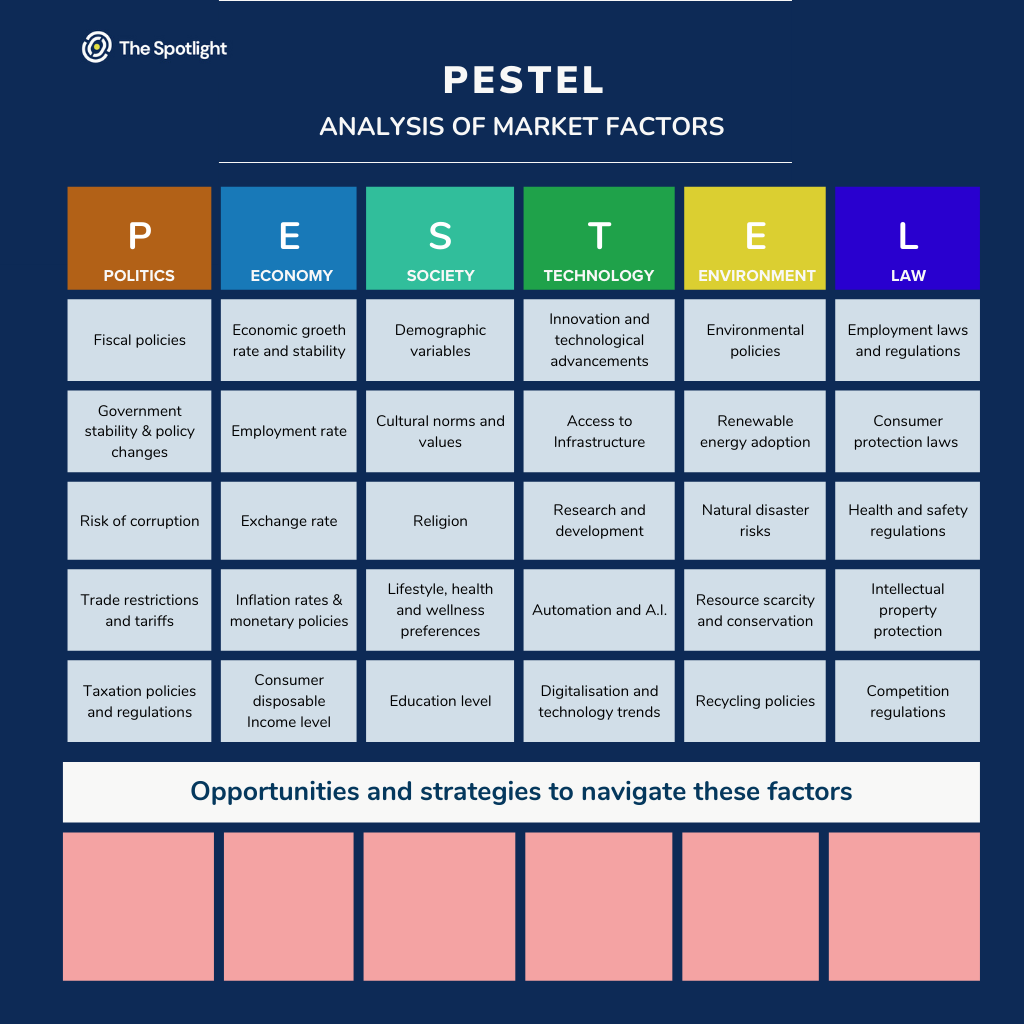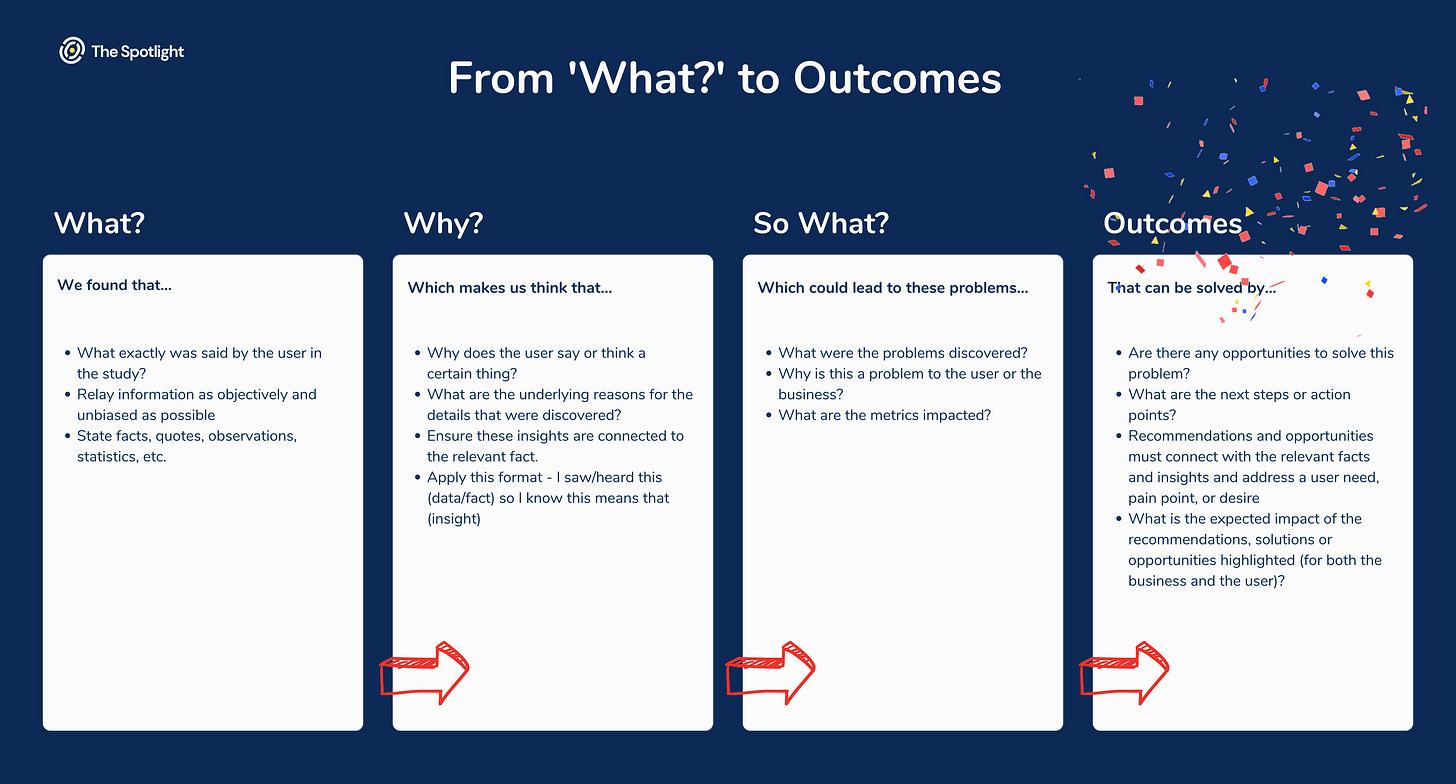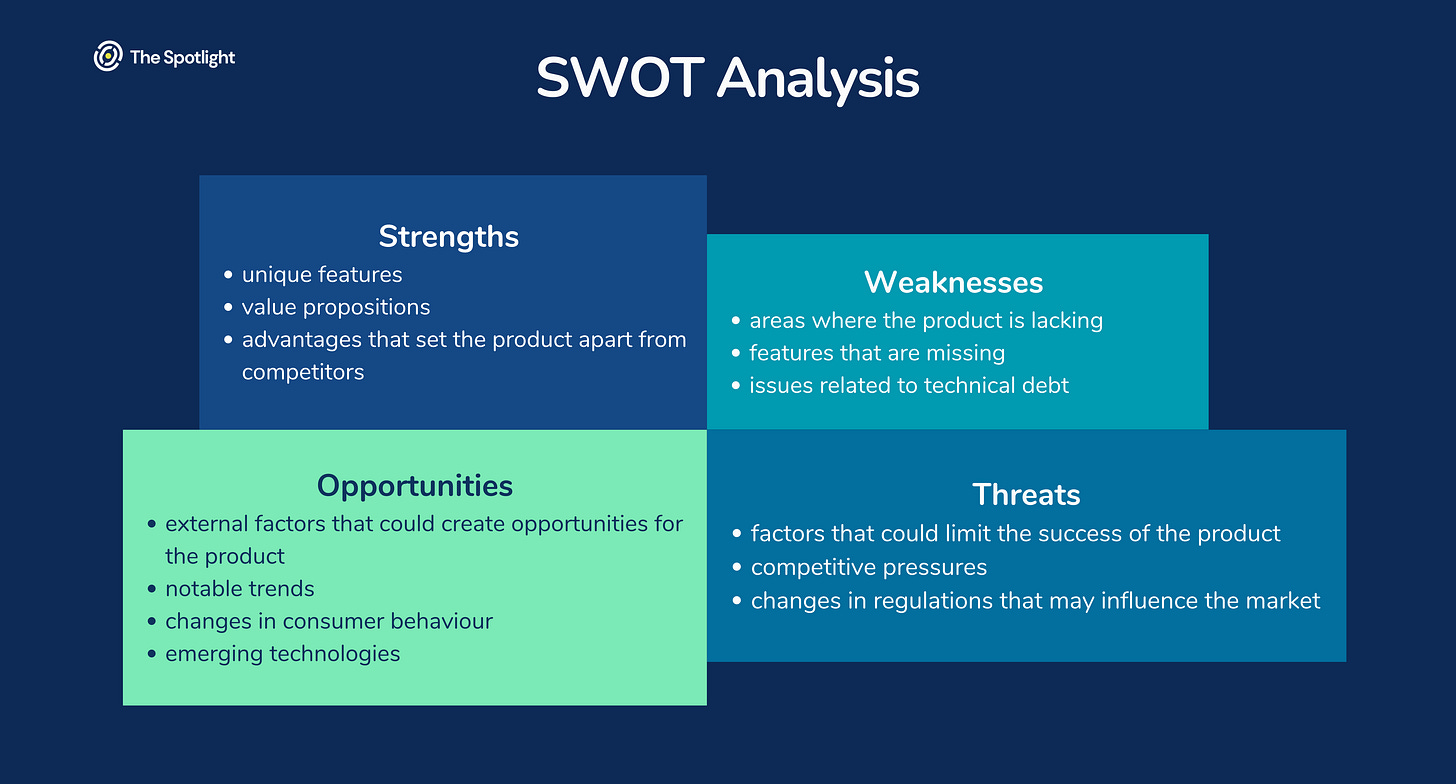Thinking in Frameworks
3 Simple Frameworks for Effective Product Research & Strategy (FREE templates included)
After you’ve organised a research study, conducted secondary research, collected user feedback, and put together relevant product analytics data, what’s your next step?
You’ve likely gathered pages upon pages and notes upon notes of data from various sources, which will need to be organised, categorised and synthesised. The aim is to draw out important insights by applying methods such as affinity mapping and thematic analysis in order to identify patterns, trends, and underlying meanings and concepts within the data.
This article will cover 3 simple frameworks to aid in critical analysis and the articulation of research insights with the goal of formulating successful products and solutions.
Why use frameworks?
Thinking in frameworks is beneficial for product research because it provides structure and a systematic approach to problem-solving. Frameworks are a set of tools and concepts that help us organise information, analyse data, and generate actionable insights.
When conducting product research, it's crucial to consider the intersection of user needs, technological capabilities, and business goals. This helps ensure that the solutions delivered not only benefit customers, but also generate a positive return on investment for the business.
You will find that when frameworks are not applied to aid product research, you are more likely to face the following challenges:
Difficulty organising the data gathered in a purposeful way - Without a structured approach to problem-solving, product research can become very disorganised and chaotic, making it difficult to figure out how to prioritise tasks, manage information, and make informed decisions.
Difficulty extricating the important findings from the rest of the data - Without applying a framework to guide critical thinking, it is more likely that we may unconsciously rely on our own biases and assumptions, leading to blind spots that prevent us from spotting the most relevant or salient information.
Difficulty articulating insights and strategies based on the learnings - Without a consistent framework for analysing data, it can be challenging to spot inconsistencies and errors in analysis, making it difficult to draw reliable conclusions.
Difficulty structuring arguments for the application of recommended strategies - Without a common language and set of concepts to guide our communication, it can be challenging to convey ideas and insights effectively to stakeholders. This can lead to misunderstandings and miscommunications that can delay or derail product development.
To minimise these pitfalls, here are 3 frameworks that you can apply to aid with organising information, analysing data, generating insights, and communicating effectively.
PESTEL analysis
The What, Why, So What and Outcomes -
What (Facts),
Why (Insights),
So What (Problems),
Outcomes (Opportunities, Recommendations, or Solutions and their Impact).
SWOT analysis
PESTEL Analysis
This framework is useful for analysing the external factors that can affect a product's success (such as changes in market conditions, regulatory environments, and consumer behaviour). By conducting a comprehensive analysis of the external environment that can impact a product and its associated business strategy, product and business teams are better able to develop effective strategies to address these factors.
How to apply this framework:
Political - Identify political factors that can affect the product, such as changes in government regulations, trade policies, political instability, or corruption. This analysis is important to assess the risks and opportunities associated with operating in different markets and jurisdictions and develop strategies to navigate the political environment.
Economic - Identifying economic factors (such as changes in interest rates, inflation rates, and/or exchange rates) can help assess the market conditions affecting consumer behaviour, which can in turn impact your product's adoption and profitability.
Social - Identifying social factors can aid in understanding your product's appeal to different customer segments and identifying potential areas for growth, based on consumer preferences or cultural norms.
Technological - Identify technological factors that can affect the product, such as advances in automation or the internet of things. This can help assess the product's compatibility with new technologies and identify potential areas for innovation.
Environmental: Identify environmental factors that can affect the product. This can help assess the product's impact on the environment and identify potential risks and opportunities related to sustainability. For instance, climate changes or regulations related to sustainability.
Legal: Identify legal factors that can affect the product's compliance with legal requirements and identify potential risks related to legal liability. This can include changes in intellectual property laws or consumer protection regulations.
When to apply this framework:
Market research - Before developing a new product, product and business teams can use the PESTEL framework to analyse the external factors that could influence its market potential. This can help with identifying the key market trends, customer needs, potential barriers to entry with the goal of evaluating the value proposition of the proposed product.
Product development - During the product development process, the PESTEL framework can be used to identify factors that could impact development and launch. For instance, it can be applied to evaluate the impact of emerging technologies or changes in consumer behaviour on the product design.
Marketing and sales - After the product has been developed, the PESTEL framework can be used to analyse factors that could influence the marketing and sales strategies, particularly to identify potential marketing channels, pricing strategies, and the competitive landscape.
Long-term business strategy - At any stage, the PESTEL framework is a useful tool for identifying potential opportunities or threats (e.g., from changes in the regulatory environment or geopolitical risks) that may impact business outcomes.
From “What?” to Outcomes
This framework is a great problem solving tool for product teams, as it helps you put your findings through a funnel in order to extract actionable insights.
How to apply this framework:
What - What are the facts gathered? What did the users say?
Why - Why do we think the users are saying this? What are the underlying reasons? What insights can you deduce?
So What - What are the problems discovered? What metrics are impacted?
Outcomes - What are the recommended solutions or action points that directly address the user needs/pain points? What is the expected impact of the recommendations, solutions, or opportunities highlighted (for both the business and the user)? This is a great way to communicate to your stakeholders why it is important to solve the problems you have identified.
When to apply this framework:
Generative research - When conducting research to help understand the motivations, pain points, behaviours and perceptions of a product's target users, typically at the research and development phase of a product lifecycle (e.g., through ethnographic studies, contextual interviews, focus groups, etc.), this framework is useful for scrutinising facts and observations and translating them to product opportunities and business outcomes.
Evaluative research - Ideally, before a product or a new feature or iteration is launched, it is evaluated using methods such as A/B testing, usability testing, surveys and card sorting to assess its usability and determine whether it actually solves the needs, wants and desires of real target users. This framework is highly effective at translating user needs to business outcomes.
SWOT analysis
This is a strategic planning tool that is useful for identifying and evaluating the internal and external factors that can impact a product's success. By conducting a SWOT analysis, product researchers can gain a better understanding of the competitive landscape, identify areas for improvement, mitigate risks, and develop effective strategies to bring the product to market.
How to apply this framework:
Strengths - Identify the unique features, capabilities, or advantages that set the product apart from competitors. This can help identify areas where the product is likely to excel and where it can be marketed effectively.
Weaknesses - Identify areas where the product is lacking, such as features that are missing or not as developed as they could be. This can help to determine areas for improvement and ensure that the product is competitive in the marketplace.
Opportunities - Identify external factors that could create opportunities for the product, such as changes in consumer behaviour or emerging technologies. This can help highlight potential market segments and areas for growth.
Threats - Identify external factors that could pose a threat to the success of the product, such as competitive pressures or changes in regulations. This can help point out potential risks and challenges and develop strategies to mitigate them.
When to apply this framework:
Product development phase - When developing a new product, a SWOT analysis can help identify the strengths, weaknesses and proposed value of the product in order to refine the product design and optimise its features to better meet customer needs.
Competitive analysis - A SWOT analysis can be used to identify opportunities and threats in the market in order to better understand the competitive landscape and identify areas where the product can differentiate itself from competitors. By evaluating competitors, product, business and marketing teams can develop competitive strategies that leverage and amplify a products strengths while mitigating its weaknesses.
If you find these templates helpful, I’d love to know! Please subscribe below if you haven’t already, connect with me on LinkedIn or follow me on Twitter.
I’d also love for you to share this newsletter with your friends and colleagues.
Thanks for reading!




